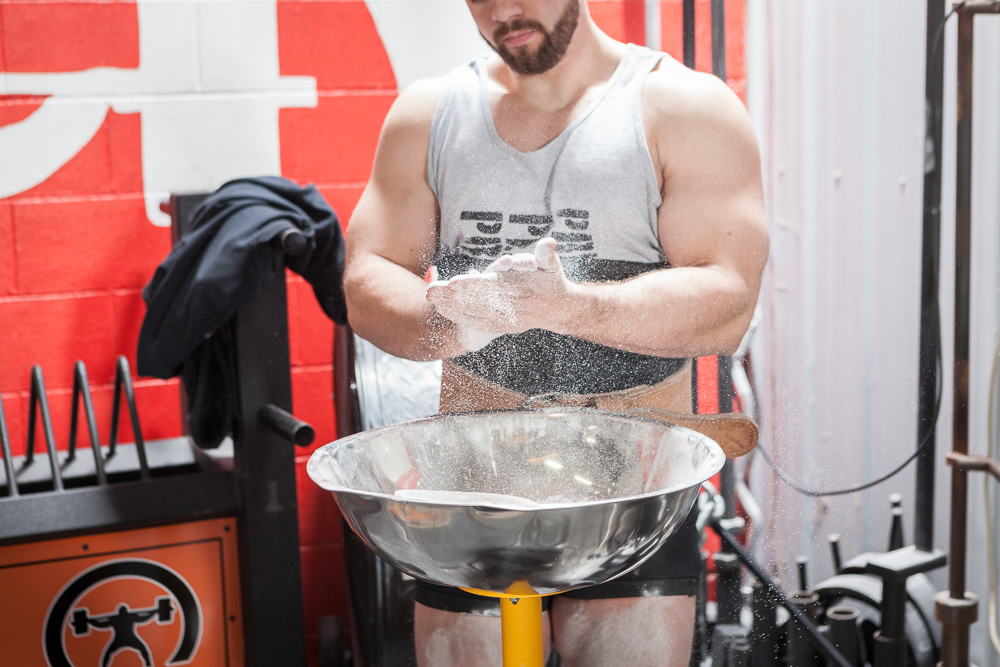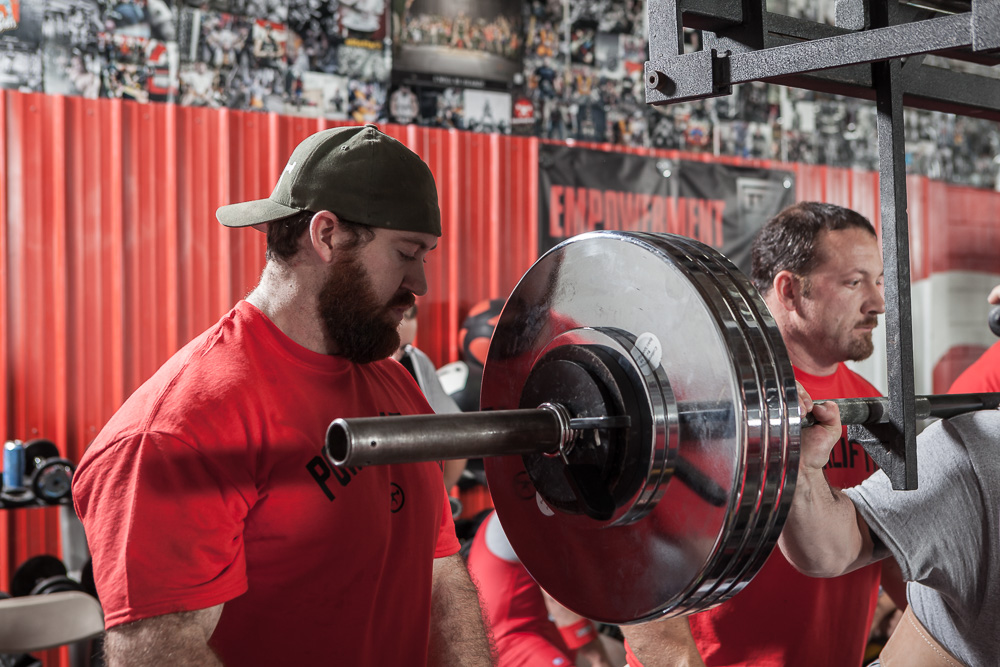
Mythbusters is back with its latest installment of in your face, non-stop action! We’re dwelling into and disseminating the truth behind many training, nutrition, and industry trends, often accompanied by pseudo-scientific ridiculousness that has little scientific support or even practical rationale. Sadly, training and nutrition myths proliferate for nearly every person who trains, either recreationally or competitively. Despite what ”TV” doctors, or any other celebrity endorsement (thanks Gwyneth Paltrow), dubious testimonials, books, or media and consumer outlets say, some of them are totally ridiculous and some of them have—like anything else—a grain of truth. The Research Meathead has come to your rescue once again and has activated the “bullshit” meter, pulling no punches. We're working our way through some of the most heinous training and nutrition myths that continue to plague the industry that just won’t die. We are laying the Smackdown with real truth and real science. Although this is not an exhaustive list, it’ll help set the record straight.
RECENT: MythBusters 201-203: Gluten, Clean Eating, and The Fat-Burning Zone
Myth 204: Increased Cortisol Is Going to Ruin Your Training
Truth: People can react to a stressor in different ways. When the stress is prolonged and seen as hopeless, the individual becomes more distressed and feels defeated. This activates the hypothalamus in the brain. What follows is a cascade of hormonal pathways resulting in the final release of cortisol from the adrenal cortex.
Cortisol is a steroid hormone that is produced in the cortex of the adrenal glands located on top of each kidney. Many factors can cause the release of cortisol such as fasting, food intake, exercising, awakening, and psychosocial stressors (3, 8, 35). One of the many “never-ending’ myths about cortisol stems from the catabolic nature of resistance training. Specifically, training in the gym is mainly catabolic and anabolism takes place outside in the gym during recovery.
Okay, okay, we know this. So what? For some unexplained reason, many have this belief that you only want to train a certain duration, otherwise cortisol will increase substantially and wilt you down into an oblivion. They often believe that cortisol is merely “all a rage” and “bad.” Many people, (exercisers, coaches and trainers) make big issues about the overall duration of their workout, due to the thinking that ‘cortisol’ is going to put them into the ground. Although cortisol is catabolic in nature, first and most important, those studies examining cortisol throughout a given workout were examined with endurance runners. Second, there is marketable difference between continued endurance events versus strength training performance regimens for brief periods of time, or short bursts followed by resting.
In addition, short-term increases in cortisol are NOT catabolic (36). Cortisol is mainly facilitated on a DNA level, and helps increase the transcription (i.e. transcription factors) of various types of DNA. Thus, cortisol is a slower acting hormone. Short-term increases in cortisol from a given training session are more indicative of the difficulty of the training, amount of damage, amount of stress, and metabolic stress (36). Hence, if your workout was effective, it should be doing these things. Recent research shows that cortisol is not catabolic, and not associated with lack of hypertrophy, but that cortisol is elevated after exercise programs that induce hypertrophy and is more strongly associated with hypertrophy and lean body mass (36).
However, I am not saying that Cortisol is anabolic, but that short-term elevations in cortisol are more indicative of a good quality training session because of the amount of stress. Also, the short term increases in other hormones (testosterone, GH,) are not as critical as traditionally thought. However, they (other hormones) are not unimportant, but there is more data that suggests it’s the overall chronic levels of testosterone and other anabolic hormones that pave the way for overall hypertrophy responses than short-term increases. (25, 26)
Myth 205: You Only Need The Big Three to Get Strong
Truth: Sorry to bury your hopes and dreams but the "big three" powerlifts—the squat, the bench press, and the deadlift—just aren't enough to promote maximal or optimal hypertrophy and overall max strength. However, instead of taking this out of context, this is not a universal prospect, as exceptions do exist. Let’s get more specific.
The main mechanisms that promote muscle hypertrophy are 1) mechanical tension (time under tension), 2) metabolic stress, and 3) muscle damage (25, 27). In short, in order to promote optimal hypertrophy, you need to stimulate all three mechanisms. However, most people simply stress TUT to a greater degree than metabolic or even muscle damage. In addition, very compelling evidence has shown that a certain degree of damage is necessarily to facilitate increases in strength and hypertrophy, particularly with eccentric training and its overall effectiveness to training (14, 16, 19). For example, the deadlift is a great strength exercise but overall falls short when is comes to promoting total body hypertrophy.
Stated another way: I didn't say you can't build hypertrophy with the deadlift. You certainly can. But the deadlift alone isn't a great hypertrophy-building movement. This is mainly due to the lack of eccentric activity coinciding with deadlifting. Case in point, there is very little eccentric loading and activity, and very little TUT (time under tension) especially if you count the time the muscles are actually producing a lot of force, rather than the time that the lift lasts. Similar notions hold true for the bench and squat.
Here's the real deal. The greater the hypertrophy, the greater increases in PCSA( physiological cross-sectional area) of the muscle, the more CSA you have, the more contractile proteins (actin and myosin) you have per cross-sectional area, and thus the better capability you have to generate fore and power. Ever see a pro powerlifter who did not have large cross-sectional areas of muscle in their backs, arms and legs? The overwhelming majority of the strength gains that accompany max strength are facilitated through volumes of work through hypertrophy at various rep schemes, manipulation of eccentric duration, isometrics, high intensity techniques, exercise variations, and volume changes. All effect outcomes of strength and hypertrophy.
Myth 206: You Cannot "Fat Adapt" Your Way to Training
Truth: Isn’t it ironic that at low intensities (and long durations, long slow cardio, etc) you achieve a greater relative percentage of calories used from fat storage vs. higher intensities BUT higher exercise intensities attained from interval training, metabolic resistance training, training volumes, total body workouts, sprints, prowler sprints, sleg drags, super sets, tri-sets, giants sets, complexes, etc. not only expend more energy but also increase the body’s potential to use fats as an energy substrate to a greater extent than steady-state aerobic exercise and traditional resistance training due to increased up-regulation of enzymes responsible for beta-oxidation (process of fat breakdown)? Further, total caloric expenditure and lipolysis (fat breakdown) are greatly enhanced by higher intensity types of training, resulting in significant effects on fat loss (33) and resistance training (22, 23, 33, 34).
Highly trained individuals and athletes have a much better ability to utilize fats and carbs during training and recovery periods, and have a greater affinity to switch fuel usage for training and non-training days (i.e. metabolic flexibility). Adaptations that enhance fat usage in trained muscles involve improving fatty acid availability to the muscle and mitochondria and improve the ability to oxidize fatty acids. These adaptations lie largely within endurance training but in recent years have transitioned over to lifting and other competitive sports (i.e. fat adapt). From a nutritional perspective, this has to do with the concept on fat adaptation. “Fat adaptation” is a protocol in which mainly endurance athletes consume a high-fat, low-carb diet for up to 14 days while undertaking their normal training (both high volume and high intensity) (38). It can also be used as a stand-alone dietary strategy or can be followed immediately by a period of CHO restoration, consuming a high-carb diet and tapering for 1–3 days.
Further, there exists a lot of controversy regarding the specific approaches to take and which fuel source people believe to be the “best”, as many feel that fat should be the main preferred fuel source over carbs for training. This is grounded in the belief that it enhances performance to a greater extent while others, and some scientific evidence says otherwise. This, of course, is highly variable for each person, population (i.e. diabetes, fat loss clients, athletes), sport, individual responses to training and nutrition, goals, and genetics. There is no one-size fit all approach. Due to these physiological occurrences, you can now begin to understand the idea and real life applications of how energy intake can influence substrate oxidation, the importance of nutrient timing; it’s effect on muscle strength, hypertrophy, and protein synthesis, all of which govern and effect the large implications of sports performance.
References
1. Legal Status of Traditional Medicine and Complementary/Alternative Medicine: A Worldwide Review.
2. Biesiekierski JR, Peters SL, Newnham ED, Rosella O, Muir JG, and Gibson PR. No effects of gluten in patients with self-reported non-celiac gluten sensitivity after dietary reduction of fermentable, poorly absorbed, short-chain carbohydrates. Gastroenterology 145: 320-328 e321-323, 2013.
3. Brooks G, Fahey, Baldwin. Exercise Physiology: Human Bioenergestics and Its Application. 2005.
4. Cascella NG, Kryszak D, Bhatti B, Gregory P, Kelly DL, Mc Evoy JP, Fasano A, and Eaton WW. Prevalence of celiac disease and gluten sensitivity in the United States clinical antipsychotic trials of intervention effectiveness study population. Schizophrenia bulletin 37: 94-100, 2011.
5. Cohen M. 'Detox': science or sales pitch? Aust Fam Physician 36: 1009-1010, 2007.
6. Cribb PJ, Williams AD, Carey MF, and Hayes A. The effect of whey isolate and resistance training on strength, body composition, and plasma glutamine. Int J Sport Nutr Exerc Metab 16: 494-509, 2006.
7. Falcone PH, Tai CY, Carson LR, Joy JM, Mosman MM, McCann TR, Crona KP, Kim MP, and Moon JR. Caloric expenditure of aerobic, resistance, or combined high-intensity interval training using a hydraulic resistance system in healthy men. J Strength Cond Res 29: 779-785, 2015.
8. Farrell J, Caiozzo. ACSM's Advanced Exercise Physiology 2nd ed.: Lippincott Williams & Wilkins, 2012.
9. Giannaki CD, Aphamis G, Sakkis P, and Hadjicharalambous M. Eight weeks of a combination of high intensity interval training and conventional training reduce visceral adiposity and improve physical fitness: a group-based intervention. J Sports Med Phys Fitness, 2015.
10. Gibala M. Molecular responses to high-intensity interval exercise. Appl Physiol Nutr Metab 34: 428-432, 2009.
11. Helgerud J, Hoydal K, Wang E, Karlsen T, Berg P, Bjerkaas M, Simonsen T, Helgesen C, Hjorth N, Bach R, and Hoff J. Aerobic high-intensity intervals improve VO2max more than moderate training. Med Sci Sports Exerc 39: 665-671, 2007.
12. Hoffman JR and Falvo MJ. Protein - Which is Best? Journal of sports science & medicine 3: 118-130, 2004.
13. Josse AR, Tang JE, Tarnopolsky MA, and Phillips SM. Body composition and strength changes in women with milk and resistance exercise. Med Sci Sports Exerc 42: 1122-1130, 2010.
14. Lastayo P, Marcus RL, Dibble L, Frajacomo F, and Lindstedt SL. Eccentric Exercise in Rehabilitation: Safety, Feasibility and Application. J Appl Physiol (1985), 2013.
15. Leonard MM and Vasagar B. US perspective on gluten-related diseases. Clinical and experimental gastroenterology 7: 25-37, 2014.
16. Lovering RM and Brooks SV. Eccentric exercise in aging and diseased skeletal muscle: good or bad? J Appl Physiol (1985) 116: 1439-1445, 2014.
17. Lundin KE. Non-celiac gluten sensitivity - why worry? BMC medicine 12: 86, 2014.
18. Lundin KE and Alaedini A. Non-celiac gluten sensitivity. Gastrointestinal endoscopy clinics of North America 22: 723-734, 2012.
19. Mike J, Kerksick, CM, Kravitz, L. How to Incorporate Eccentric Training Into a Resistance Training Program. Strength and Conditioning Journal. 37 (1): 5-17. February 2015. How to Incorporate Eccentric Training Into a Resistance Training Program. . Strength Con J 37: 5-17, 2015.
20. Miller GD, Drewnowski A, Fulgoni V, Heaney RP, King J, and Kennedy E. It is time for a positive approach to dietary guidance using nutrient density as a basic principle. J Nutr 139: 1198-1202, 2009.
21. Naimo MA, de Souza EO, Wilson JM, Carpenter AL, Gilchrist P, Lowery RP, Averbuch B, White TM, and Joy J. High-intensity interval training has positive effects on performance in ice hockey players. Int J Sports Med 36: 61-66, 2015.
22. Ormsbee MJ, Thyfault JP, Johnson EA, Kraus RM, Choi MD, and Hickner RC. Fat metabolism and acute resistance exercise in trained men. J Appl Physiol (1985) 102: 1767-1772, 2007.
23. Petitt DS and Cureton KJ. Effects of prior exercise on postprandial lipemia: a quantitative review. Metabolism 52: 418-424, 2003.
24. Pietzak M. Celiac disease, wheat allergy, and gluten sensitivity: when gluten free is not a fad. JPEN J Parenter Enteral Nutr 36: 68S-75S, 2012.
25. Schoenfeld BJ. The mechanisms of muscle hypertrophy and their application to resistance training. J Strength Cond Res 24: 2857-2872, 2010.
26. Schoenfeld BJ. Postexercise hypertrophic adaptations: a reexamination of the hormone hypothesis and its applicability to resistance training program design. J Strength Cond Res 27: 1720-1730, 2013.
27. Schoenfeld BJ. Potential mechanisms for a role of metabolic stress in hypertrophic adaptations to resistance training. Sports Med 43: 179-194, 2013.
28. Smith CF, Williamson DA, Bray GA, and Ryan DH. Flexible vs. Rigid dieting strategies: relationship with adverse behavioral outcomes. Appetite 32: 295-305, 1999.
29. Snijders T, Res PT, Smeets JS, van Vliet S, van Kranenburg J, Maase K, Kies AK, Verdijk LB, and van Loon LJ. Protein Ingestion before Sleep Increases Muscle Mass and Strength Gains during Prolonged Resistance-Type Exercise Training in Healthy Young Men. J Nutr 145: 1178-1184, 2015.
30. Stewart TM, Williamson DA, and White MA. Rigid vs. flexible dieting: association with eating disorder symptoms in nonobese women. Appetite 38: 39-44, 2002.
31. Tang JE, Moore DR, Kujbida GW, Tarnopolsky MA, and Phillips SM. Ingestion of whey hydrolysate, casein, or soy protein isolate: effects on mixed muscle protein synthesis at rest and following resistance exercise in young men. J Appl Physiol (1985) 107: 987-992, 2009.
32. Tang JE and Phillips SM. Maximizing muscle protein anabolism: the role of protein quality. Curr Opin Clin Nutr Metab Care 12: 66-71, 2009.
33. Tremblay A, Simoneau JA, and Bouchard C. Impact of exercise intensity on body fatness and skeletal muscle metabolism. Metabolism 43: 814-818, 1994.
34. Treuth MS, Hunter GR, Weinsier RL, and Kell SH. Energy expenditure and substrate utilization in older women after strength training: 24-h calorimeter results. J Appl Physiol (1985) 78: 2140-2146, 1995.
35. Walter B. Medical Physiology 2nd Edition-Updated. Saunders; 2nd edition, 2011.
36. West DW and Phillips SM. Associations of exercise-induced hormone profiles and gains in strength and hypertrophy in a large cohort after weight training. Eur J Appl Physiol 112: 2693-2702, 2012.
37. Wisloff U, Ellingsen O, and Kemi OJ. High-intensity interval training to maximize cardiac benefits of exercise training? Exerc Sport Sci Rev 37: 139-146, 2009.
38. Yeo WK, Carey AL, Burke L, Spriet LL, and Hawley JA. Fat adaptation in well-trained athletes: effects on cell metabolism. Appl Physiol Nutr Metab 36: 12-22, 2011.












